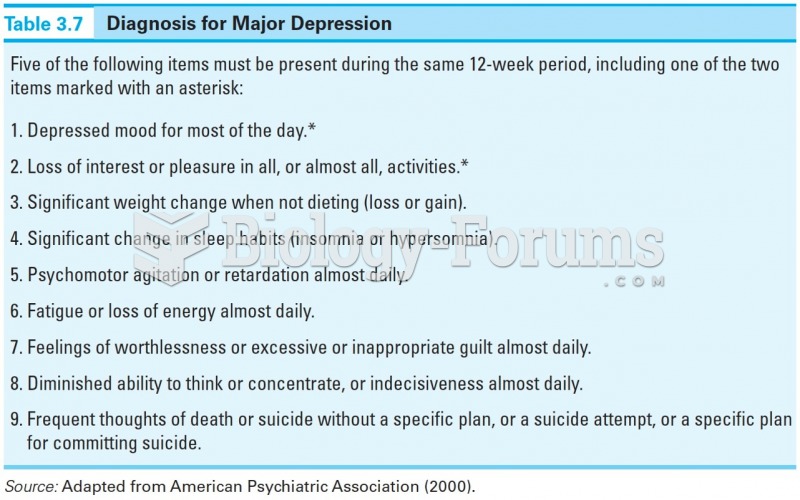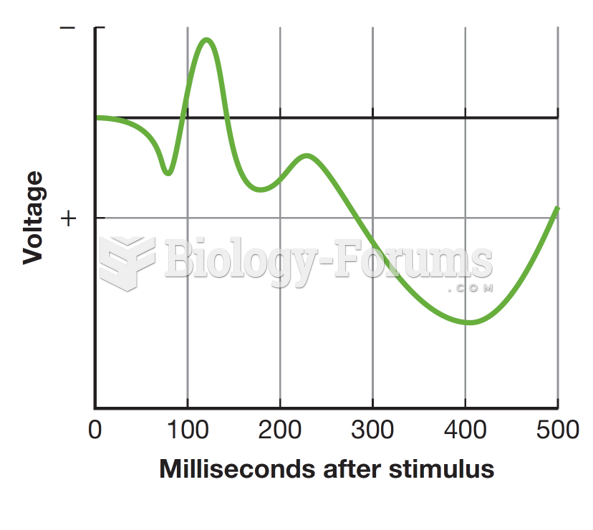|
|
|
The first documented use of surgical anesthesia in the United States was in Connecticut in 1844.
A recent study has found that following a diet rich in berries may slow down the aging process of the brain. This diet apparently helps to keep dopamine levels much higher than are seen in normal individuals who do not eat berries as a regular part of their diet as they enter their later years.
Limit intake of red meat and dairy products made with whole milk. Choose skim milk, low-fat or fat-free dairy products. Limit fried food. Use healthy oils when cooking.
Blood is approximately twice as thick as water because of the cells and other components found in it.
Increased intake of vitamin D has been shown to reduce fractures up to 25% in older people.







